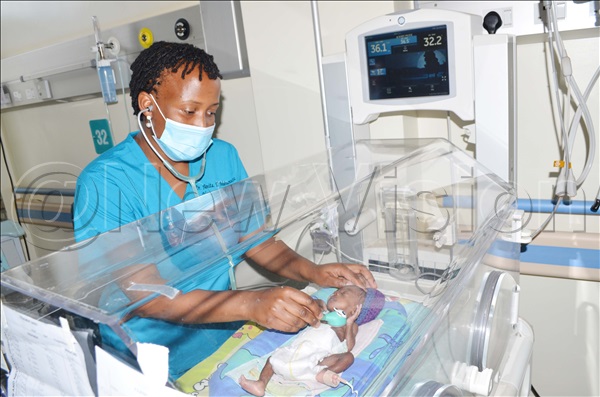Uganda ranked 28th worldwide in preterm births
Essential newborn care, as well as basic care for feeding support, infections and breathing difficulties can mean the difference between life and death for small babies.
Uganda ranked 28th worldwide in preterm births

NewVision Reporter
@NewVision
Uganda, on Tuesday November 17, joined the rest of the world to celebrate the World Prematurity Day. Premature birth is the leading cause of death in children under the age of five worldwide.
World Prematurity Day is observed on November 17 annually to raise awareness on preterm birth and the concerns of preterm babies and their families worldwide.
According to a statement released by Plan International, Uganda is currently ranked 28th worldwide, with the highest preterm birth estimated at 13.6 per 1,000 live births.
The statement adds: “In addition, 226,000 babies are born too soon each year and 12,500 children under five die due to direct preterm complications.”
Approximately 15 million babies are born preterm each year, accounting for about one in 10 of all babies born worldwide. More so, Uganda is part of the Sub-Saharan Africa, where 60% of preterm births occur; alongside South Asia.

A doctor cares for a preterm baby in hospital
What should be done?
According to Plan International, essential newborn care (drying, warming, immediate and exclusive breastfeeding, hygiene and cord care), as well as basic care for feeding support, infections and breathing difficulties can mean the difference between life and death for small babies.
“More effort is needed to identify women at risk of preterm labor and support them to give birth in a health facility that can offer extra care when needed, such as support for adequate feeding with breast milk, continuous skin to skin contact, antibiotics, and antenatal corticosteroids. To do this, it is critical that families, communities and health care workers value small babies so that they receive the life-saving care they need,” the statement adds.
The 10 elements of care recommended by WHO for improved preterm birth outcomes, tocolytics, magnesium sulfate, antibiotics for preterm premature rupture of membranes, and kangaroo mother care are currently included in Uganda’s clinical standards of preterm care at the hospital level.
Plan International also adds that preterm births are more likely to occur in women of short statue, living in rural areas, those who do not attend antenatal. It is also higher for women who get PROM, APH and preeclampsia/eclampsia in pregnancy. Preterm births are directly responsible for 25% of the 27 neonatal deaths per 1,000 live births.
Risks of Preterm birth include Cerebral palsy, Impaired learning, Vision problems, Hearing problems, dental problems, Behavioral and psychological problems, Chronic health issues.